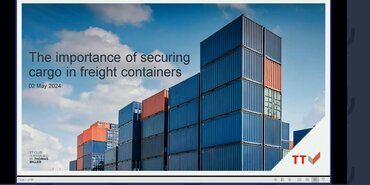What Can The Ship Do? Tackling Fires On Board Container Ships
This article summarises key points from a webinar discussing firefighting capabilities and challenges on container ships. The webinar featured presentations from maritime experts Nick Haslam and John Gao, followed by a Q&A session.
Comparing Firefighting On Land and At Sea
Firefighter John Gao highlighted major differences between land-based and ship-based firefighting:
- Firefighter training is far more extensive on land - 12 weeks initially versus 2.5 days at sea.
- Land-based firefighters have better protective equipment and breathing apparatus with longer durations.
- Buildings have more fire-resistant compartments and easier access than ships.
- Land-based firefighters have faster backup, while ships may wait hours or days.
- A typical high-rise response would have 20 firefighters, comparable to 23 crew on a ship. But the ship's crew has far less training and experience.
- Ships require improvising with available equipment and tricky access situations.
Firefighting Equipment and Training on Ships
- STCW requires basic and advanced courses in firefighting for seafarers, but the training is very limited compared to land-based firefighters.
- Ships must have fire hoses, mobile water monitors (MWMs), breathing apparatus, and more. However, equipment can be difficult to maneuver around enormous modern container ships.
- MWMs weigh 20+ kg and may need to be hauled up 5+ decks, competing for limited breathing apparatus air.
Challenges of Container Ship Fires
- Fires often spread rapidly before detection, escalating beyond basic firefighting training and equipment.
- Most containers are not classified as dangerous but still contain plastics and chemicals that can react explosively and release toxic gases.
- Delayed CO2 release into cargo holds allows fires to grow too large to be suppressed. CO2 effectiveness is also limited by non-gas-tight hatch covers.
- Boundary cooling can help control fires but manual interior firefighting is extremely dangerous and difficult.
Potential Improvements in Fighting Container Ship Fires
- Earlier fire detection and suppression would make a major difference.
- Additional firefighting equipment like fixed water monitors can help, though cost is a factor.
- Better compartmentalisation and sealing of cargo holds supports CO2 effectiveness.
- Enhanced crew training focused on likely container ship fires could improve outcomes.
Key Takeaways
- Container ship crews face unique firefighting challenges for which basic regulatory requirements may be inadequate.
- A combination of earlier detection, better equipment/training, and improved ship design is needed.
- More research on successful container ship firefighting could help identify best practices to apply more broadly.
Documents
TT and UK PI Club ship fire series - webinar 2 - slidedeck (4.06 MB) 19/02/2021
- Author
- Staff Author
- Date
- 17/02/2021





